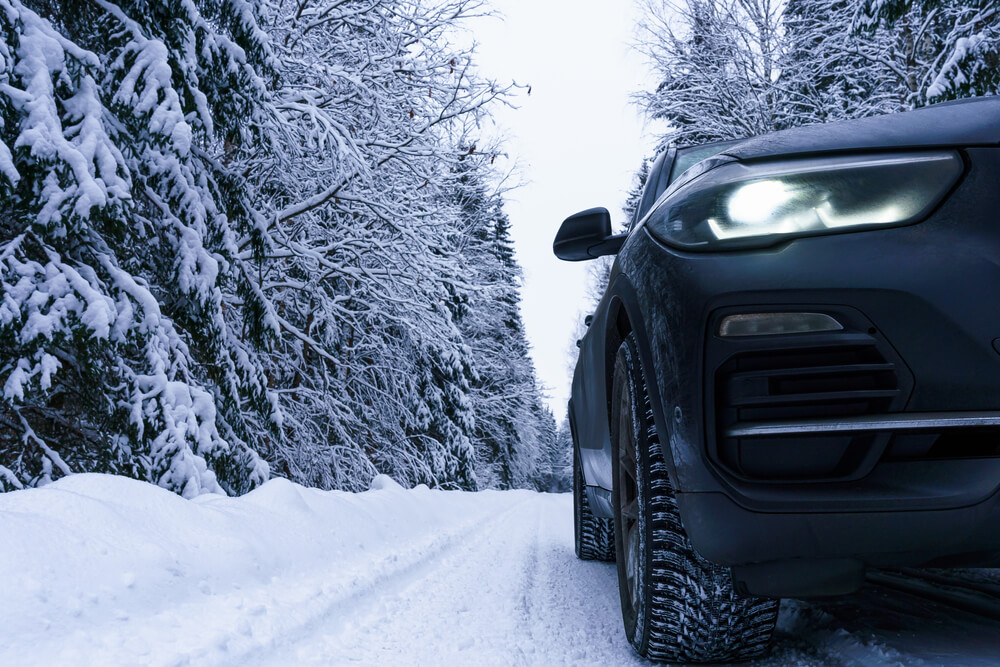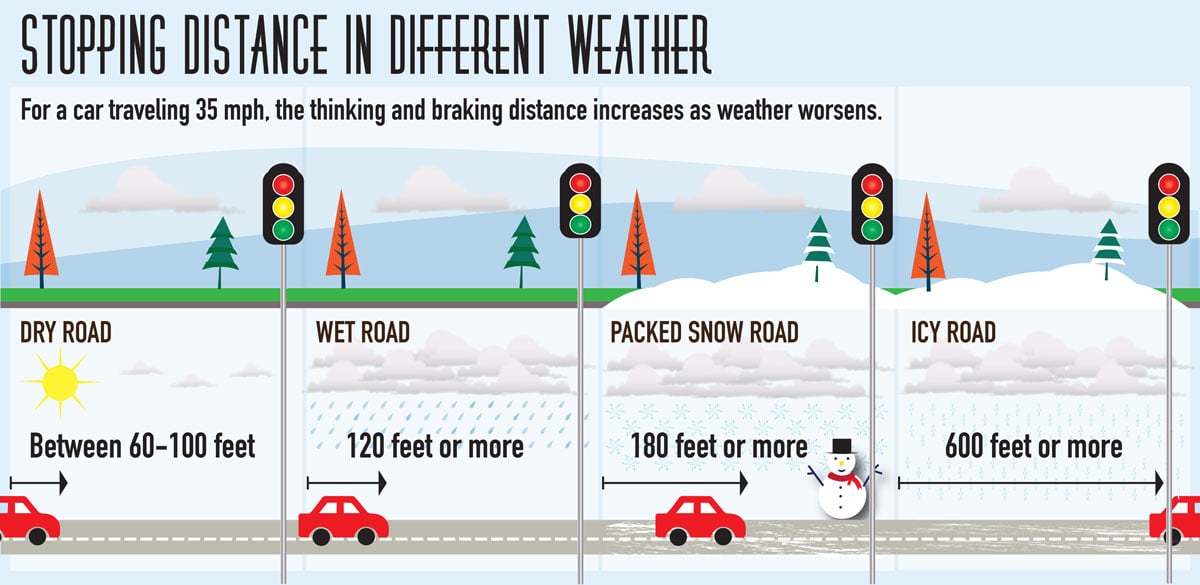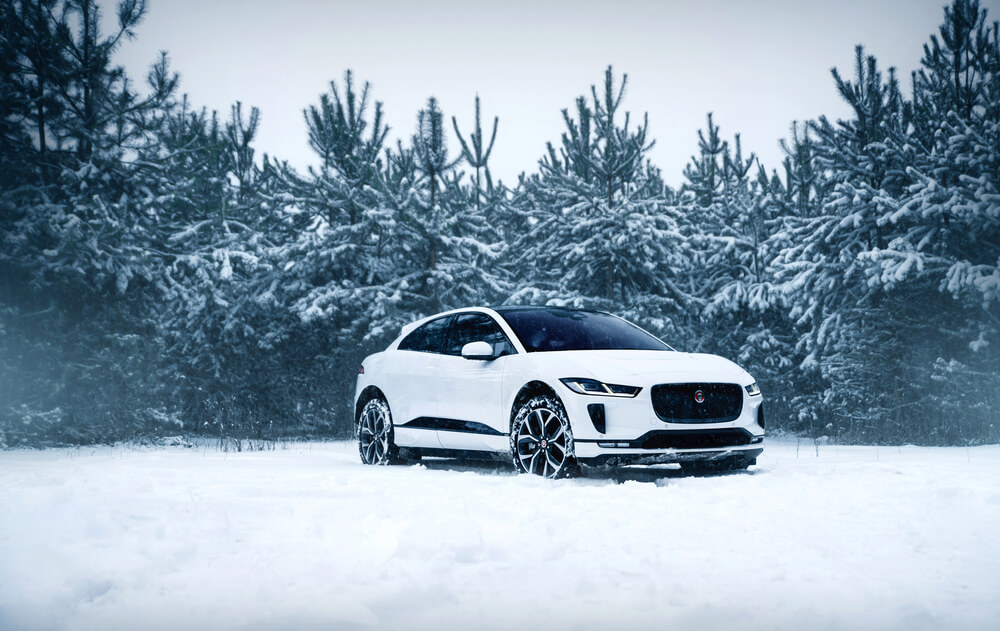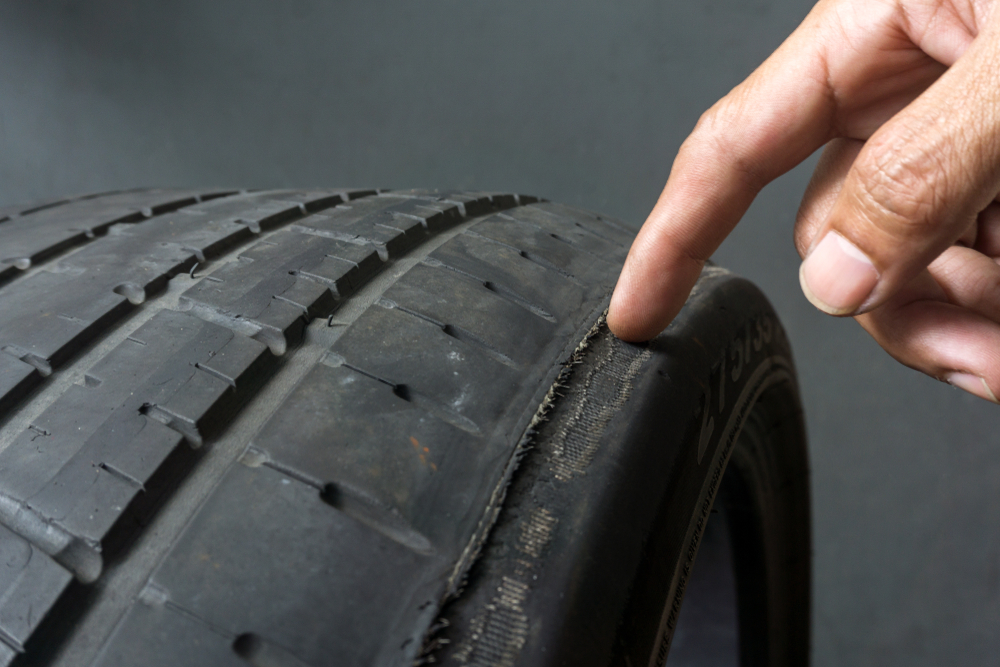
Nearly 70% of the United States experiences snow and ice on the roads throughout the year – so most people have driven through winter weather at some point.
Even though many people live in these cold climates, not everyone knows how to operate in the snow safely. This problem worsens when traditionally snow-free states experience a snowstorm. So for the safety of everyone on the road, knowing how to drive in the snow is essential.
Prepare for Winter Conditions
Preparation is essential for safe winter driving. Do everything in your power to stay safe this winter season, beginning with the three best ways to prepare for winter conditions: changing your tires, driving cars with AWD or 4WD, and putting together an emergency kit.
Don’t Forget to Change Your Tires
Before the weather turns, you need to change your tires. Depending on where you live and how soon it begins to snow, you will want to put winter tires on your car between the end of September to early November.
Winter tires are not your typical tire, and they differ from all-season tires in a few ways. The rubber is much softer than traditional tires, so they don’t freeze as quickly and can safely drive over ice and cold roads.
The rubber is also much more flexible, minimizing the damage that freezing temperatures causes to your tires. With flexible rubber, water and snow can fit between the treads to keep the tire connected to the road.
Any winter tire will do the job, but your drive will be much better if you can specifically order a set of tires for snow or ice. Snow tires are best for people who drive in urban areas. These tires have wider treads and grooves that allow snow and water to fill the gaps.
In contrast, ice tires are great for people who drive on the highway. While these tires need good tread, the focus is on the tread pattern which is more important for ice on the roads.
AWD or 4WD
The best winter-equipped vehicles come with All-Wheel Drive (AWD) or Four-Wheel Drive (4WD). While these two drive systems are similar in name, they are distinctly different in function.
AWD
All-Wheel Drive means all four tires move the car forward. The engine disperses energy into each tire, making four distinct contact points with the road. This feature keeps you safe at all times.
Whenever the computer system in the car senses that one or more of the tires has lost control, it quickly moves its energy resources towards the tires touching the ground.
4WD
Four-Wheel Drive uses all four tires, just like AWD, but they all move at the same speed and spin rate because the car’s computer system monitors the front and rear axles.
This distinct feature helps prevent sliding on the Road. However, 4WD can damage your drivetrain if you forget to turn it off.
Put Together an Emergency Kit
An emergency kit is helpful all year but is especially critical during the winter. An emergency kit prepares you for anything that may happen while you’re out on the road. Here are ten things that can help you prepare to drive during the winter months.
-
Jumper Cables
Most cars have tell-tale signs the battery is low–like taking a few seconds for the engine to turn over when you insert the key into the ignition. Starter cables are helpful when the temperature drops if you need to jumpstart your car or help out someone else.
-
Blanket
Sometimes vehicle issues take longer to resolve than expected, or it is cold outside and you need to pump a tire. Keeping a blanket in the car at all times is a great way to stay warm while waiting for roadside assistance.
-
Rags
Regardless of what you repair, it is always helpful to have rags on hand. You don’t want to use your blanket as a rag since it will get dirty with oil, grease, and antifreeze. You can turn old t-shirts and towels into rags. Use rags for anything, from checking your oil to changing your tires.
-
Oil
While you shouldn’t perform a full oil change on the side of the road, keeping some extra engine oil on hand is necessary. That way, you can quickly and safely add more oil if your engine runs low. Oil is essential to keep your engine running. Without it, your vehicle would overheat and eventually die on the side of the road.
-
Antifreeze
Whereas water keeps your engine cool, it also quickly freezes in the winter. Antifreeze has a much lower freezing temperature, so it can keep your engine cool and prevent blockages in the tubing. That’s why antifreeze is a necessary vehicle component – especially for winter driving.
-
Flashlight
Even though phones have flashlights, keeping another flashlight on hand is a great idea. A flashlight runs on batteries, so if you keep extra batteries in the car you never have to worry about it dying. Also, some flashlights have magnetic features, so you can magnetically attach the flashlight to your car for hands-free work.
-
Tire Gauge
The tire gauge is an underrated piece of equipment. There are several gauges, but the cheapest and easiest to read are the mechanical ones. If you keep mechanical tire gauges, you should have two or three in the car. Since these tools can be more inaccurate, multiple tire gauges give you an accurate reading.
-
Windshield Wipers
Ideally, you should change your windshield wipers every four to six months. But even if you replace them regularly, you should also keep a spare set of wiper blades in your emergency kit.
Wiper blades last several months, but it’s easy for the rubber to tear during a torrential storm or from overuse. Keeping a spare set is a great way to stay safe on the roads when bad weather impairs your vision.
-
Spare Tires
Most vehicles come with spare tires, but if you’ve used one already, you need to get another. Spare tires are great for getting from the side of a road to a tire shop. Spare tires and carjacks go hand-in-hand, so you should have both ready just in case.
-
Toolbox
For most repairs, you need a set of tools to get the job done. Keeping extra sockets, wrenches, and screwdrivers in a toolbox is a great way to stay prepared for anything that can happen.
Several issues can arise when you drive your car in the winter, especially with the cold and the salt on the roads. With an emergency kit, you guarantee safety and success for those minor inconveniences.
10 Tips Once You’re Out on the Road
The moment you pull out of your driveway, you are at the mercy of the elements, your driving skills, and other drivers’ awareness. Of those three things, you can only control yourself. Use these ten tips to stay safe regardless of the road conditions.
-
Drive Slow
It is always better to slow down when driving in poor conditions, but this is especially true when it has recently snowed. Fresh snow is slick and icy, so it is easy for your vehicle to slip while driving.
Before you head out on the road, check the road conditions to determine whether or not it is safe to venture out. Ask yourself:
- Has the town put salt down on the roads?
- Has the city plowed the snow?
- How long has it been since it snowed?
- Have the temperatures been fluctuating the last few days? If so, it’s highly likely parts of the road are covered in black ice.
If it is currently snowing, you need to see how much has built up on the streets, if the visibility is low, and if you have snow tires. Ultimately, the best decision is to stay home in poor conditions, especially if you are unsure about road safety.
-
Brake Sooner Than You Think
When there is snow or ice on the ground, braking is challenging because your vehicle cannot maintain traction. In icy conditions, you should plan to begin braking at a distance of 600 feet or more to preserve the safety of your vehicle.

The extra distance and time also allow you to pump your brakes, rather than slam on them, which preserves their longevity and functions.
-
Drive Smoothly
With less contact on the road than usual, smooth driving is more necessary than ever. Sudden, jerking motions can cause you to slip and slide on the street. To the best of your ability, avoid sudden motions to prevent accidents.
-
Look Ahead & Prepare for Any Obstacles
Especially in the snow, you must drive proactively. Waiting too long to react to sudden changes in road conditions or traffic patterns is a recipe for disaster. Pay attention to what’s in front of you, and watch other vehicles to see if they slip or avoid certain parts of the road.
Observing driving patterns can let you know what lies up ahead before you get there. And in all cases, be prepared to stop or slow down at a moment’s notice.
-
Avoid Sudden Braking
This rule is great for all road conditions, but it is especially critical in wet and cold weather. If you slam on your brake pedal while sliding, you lock your brakes and turn your wheels into ice skates. It will be impossible to slow down your car once you lock your brakes.
-
Pay Attention to ABS and Stability Control Warnings
While driving in inclement weather, you may notice warning lights and sounds coming from your dashboard. These helpful notifications let you know when you activate your anti-lock brakes and regain control using various computing systems and methods.
-
Don’t Over Rely on AWD or 4WD
Even though most winterized vehicles come equipped with AWD or 4WD, you shouldn’t solely rely on these systems to keep you safe. These systems cannot help you steer or direct the vehicle. They work strictly on maintaining contact with the road.
-
Stay in Your Lane
Switching lanes unnecessarily creates more room for accidents. There are more blind spots when it’s actively snowing or raining, so other drivers can’t see you well, and you can’t see other vehicles. If you absolutely must switch lanes, save these switches for getting off at exits or making turns at lights and stop signs.
-
Drive Defensively
Similar to driving proactively, defensive driving is crucial in bad weather. One of the best ways to stay safe on snow-covered roads is to give plow trucks and salt trucks plenty of space to operate. If you drive too close to them, you risk irreparable damage.
-
Never Use Cruise Control
Cruise control is an excellent feature for driving down interstates and helps save gas. However, cruise control is the last thing you want to use when dealing with adverse conditions. Adaptive cruise control cannot predict or adapt to road conditions, so it is always better to accelerate and decelerate your car yourself.
What to Do if You Start Skidding
Even with the best of intentions, sometimes, skidding while driving becomes inevitable. So, your best defense is to learn how to operate your vehicle before your tires lose grip.
Front-Tire Skid
Also known as understeer, front-tire skids are considered easier to handle but are still nerve-racking for new drivers. The best way to regain control is to step off the gas and allow the car to slow down naturally. As the vehicle slows down, slowly turn the steering wheel straight, and whatever you do: Do not hit the brakes.
Rear-Tire Skid
Rear-tire skids are known as oversteer and are trickier than front-tire skids. With this type of skid, the vehicle’s weight shifts onto the front tires, and the rear tires lose traction, leading to fishtails. To correct this skid, steer in the direction of the skid, not the direction you want to go. Then, gently accelerate but never hit the brakes.
Conclusion
Since most places in the US experience severe winter weather, you must know how to drive in the snow and ice. Prepare for winter conditions, follow these tips, and learn how to steer out of a skid to keep yourself and others safe on the road.
If you’re worried about traveling or moving during the winter months or are afraid of driving your car in harsh weather conditions, call Guardian Auto Transport. We will take care of your car transport and save you the hassle of winter driving. Visit our website today for a free estimate.




